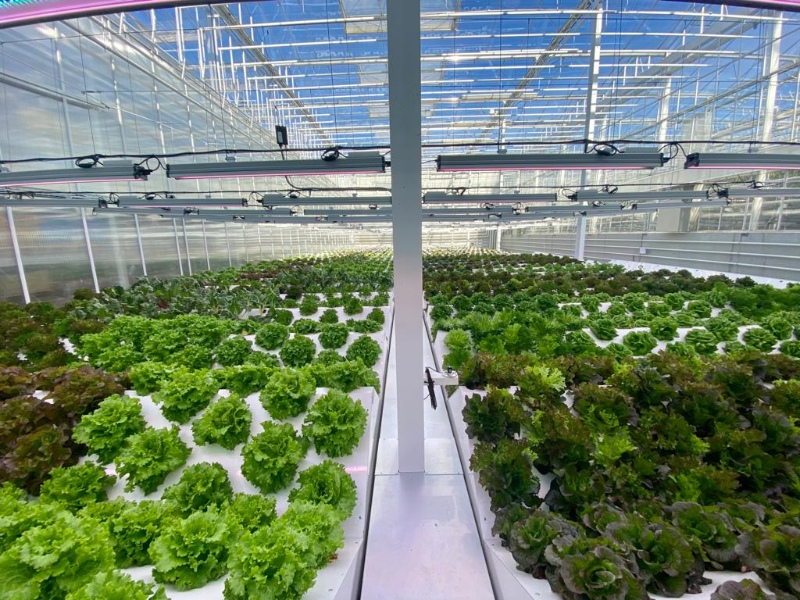What is Aeroponics ?
Aeroponics is a soil-less cultivation method in which plants grow “in the air”, having their root system misted regularly with a nutrient-rich solution.
The main advantages of Aeroponics, besides its extremely efficient water usage (97% less than traditional agriculture and 30% less than hydroponics), is the large amount of oxygen availability to the roots and the non-propagation of any pathogen since each plant is independent from each other.
Oxygen is a key factor in the growth of the plant. The aeroponic technique allows the plant to be fully oxygenated throughout its entire growth cycle which leads to an ability to grow large heads of lettuce with great quality and leaf strength. Most lettuce gain a lot of weight at the end of their growth cycle, so being able to leverage these extra few days of growth without the roots being asphyxiated in water allows aeroponic producers to grow lettuce weighing 500 to 550g consistently throughout the year. This is especially interesting if you’re selling your lettuce for the ready-to-eat sector. That means less transformation costs for your clients.
Why using Aeroponics?
Global warming and climate change pose huge threats to the traditional cultivation of plants. Aeroponics is a solution to the problems of traditional cultivation, especially in the countries that lack clean water, or arable soil. It is an effective method for what is called urban agriculture and is encouraged by the Food and Agriculture Organisation (FAO) and the United Nations.
The indoor growing techniques gain a lot of momentum right now as they are a key answer to several large trends that change our society:
- The effects of climate change (droughts, floods…) are felt more often and more drastically. This is true in traditional growing countries like South of Spain for Europe or California/Arizona for North America but also in Northern areas this year with such a dry hot summer.
- The side effects of the COVID crisis that exposed the weaknesses of a global supply chain and therefore raised an strong awareness and willingness at country level to increase food independence.
- The drive from people to eat sustainable, local, pesticide-free products.
Additionally, Aeroponics is a year-long cultivation method, the cultivation system allows non-stop production with a consistency of size, colour and quality, as well as allowing regularity in order to enable improvement of yields during processing with reduction of waste. Also enabling the hiring of full-time employees.
What are the benefits of Aeroponics compared to Hydroponics ?
Of course Hydroponics and Aeroponics have a lot in common. Beyond both being soil-less techniques, they don’t use pesticides or herbicides as they’re in fully controlled environment, they allow more growth cycles and thus a higher yield while also reducing the amount of water needed to grow one kilo of produce. That is all very good news for the industry in general.
But they also have differences and according to your needs one or the other can be more suitable.
To name a few of aeroponic advantages: Aeroponics uses less water; allows for control and adaptability; precise and easier to harvest; better quality; consistency and security of produce; year-round production; high level of automation; no cross-contamination risks; no stagnation or splashing of water.
.png)













